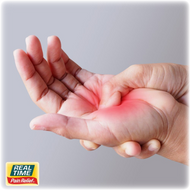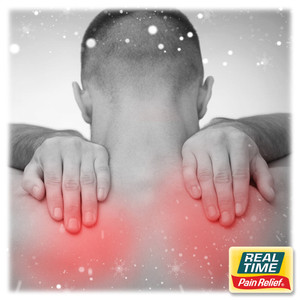12 Secrets to Ease Hand & Knuckle Pain
12th May 2021
Hand and Knuckle pain affects many people. It can be triggered by disease or an injury to the bones, muscles, joints, tendons, blood vessels, or connective tissues. Pain in the hands can make it hard to complete tasks that rely on steadiness and finger dexterity. If hand pain is keeping you from doing the things you love, here are 12 secrets that might help you find some relief.
1) Hot and Cold Compress
Apply a cold compress for 10-20 minutes, and then apply moist heat for the same amount of time. Cold packs reduce pain and swelling by constricting blood vessels. Moist heat dilates the blood vessels and increases oxygen and blood flow, providing the affected area with nutrients.
- To apply moist heat, you can use a moist heating pad, place hands in warm water, wrap with a warm, damp towel, use a hydrocollator pack, or try a warm paraffin wax bath.
- For a cold compress, you can wrap a towel around a bag of ice and apply to area.
2) Hand Exercises in Heated Rice
Fill a large, microwave-safe bowl with uncooked white rice and heat it in the microwave until hot. Check the temperature of the rice before submerging your hand, and then open and close your hand in the heated rice for several minutes. The heat and movement is beneficial for blood flow in the hand.
3) Epsom Salt Bath
Epsom salt is a great source to help reduce inflammation. Soak your hands for 30 minutes, at least 1 time a day in a bowl of warm water and Epsom salts. Or, you can mix Epsom salts in warm oil until dissolved and massage the mixture over your hands.
4) Don't Favor the Sore Hand or Finger
It might be difficult not to, but favoring the soreness adds extra stress on your hands. When you compensate for the pain, you overuse other parts of your hand. Try to use all fingers evenly and to hold the hands in their normal position. Hand exercises can also help with this.
5) Check Your Keyboard Position
Typing on a keyboard can strain your hands. If you spend most of your day typing, make sure that your desk works for you. Here are some tips to get started.
- Get an adjustable keyboard tray that allows you to raise and lower its height and angle for your hands and wrists.
- Adjust your keyboard so your elbows are bent and your forearms are resting on your desk and approximately parallel to the floor.
- Try ergonomic options, like a split keyboard or a modified mouse with a larger scroll and click wheel or trackball.
6) Eat Flavonoid-Rich Foods
Flavonoids are found in many fruits and vegetables and fight inflammation throughout the whole body.
Flavonoid rich foods include:
- Red or Purple Grapes
- Red Onion
- Red Apples
- Berries
- Broccoli
- Leafy Greens
- Tomatoes
- Cherries
- Plums
- Citrus Fruits
7) Topical Pain Reliever
Massage a topical pain relief lotion into your hands to experience relief. They are a proven, well-controlled, over-the-counter pain relief option. Look for something that contains menthol or methyl salicylate, as they are proven topical analgesics. Other beneficial ingredients include capsicum, aloe vera, arnica montana, emu oil, turmeric oil, calendula, and more.
8) Hand Exercises
There are a number of beneficial exercises for hand and knuckle pain. If you can work them into your daily routine, it will improve your finger dexterity and range of motion and decrease stiffness. Here are some basic exercises for the hands and knuckles. It is important to work slowly to avoid unnecessary pain.
- Finger Touches: Touch your thumb to your index finger, then pinch. Next touch your thumb to your middle finger and pinch. Repeat this process with your ring finger and pinky.
- Finger Spreads: Practice spreading all of your fingers apart then bringing them all back together again. This works to improve your range of motion.
- Fists: Squeeze your fingers together and form a fist then stretch your fingers out again.
- Wall Walking: Walk fingers up a wall then walk them down.
- Squeeze a soft foam ball.
9) Wear a Splint
A splint provides support, stabilizes the joints, and keeps you from using your hands in a wrong way due to compensation. There are two types of splints that can relieve added stress and protect from bumps. One type promotes rest by immobilizing the hand. The other is a “working splint” and provides stability for your hand but allows finger movement, enabling you to wear it during activities. Splints can be custom made for your shape and needs.
10) Rest
Sometimes our everyday tasks require us to use repetitive movements. Mybe your hands and knuckles could use a break from the constant motion. It seems almost impossible to truly rest your hands since they are one of the hardest working parts of our body, however, it might be beneficial to wear a resting splint to take some of the pressure off. Limiting your range of motion might be the only way to consciously give your hands the rest they may need.
11) Invest in Arthritis-Friendly Tools
There are many options on the market that provide arthritis-friendly tools that enable you to perform tasks that may be eluding you due to your hand and knuckle pain. Many items that are available include: tools with larger handles, padded grips that keep you from having to pinch or squeeze your pain-ridden fingers, can and bottle openers, button hooks, pencil grippers, knives, special door handles, and that is just naming a few!
12) Massage
Massage is a wonderful way to help relieve any kind of pain. Here is how you can give yourself a hand massage:
- Slightly shake your hands and wiggle your fingers to release any tension.
- Rub a topical pain reliever or some coconut oil on the hand you wish to massage.
- With your palm facing up, gently push down on the tips of your fingers with your other hand. Do this a few times. This will stretch your ligaments.
- With your thumb and forefinger, pinch the tips and bottoms of each finger and gently squeeze from side to side.
- When you have done that for all 5 fingers, hold your hand and place your thumb in the middle of your palm.
- Then gently push and massage all the areas of your palm, concentrating on the base of your fingers and the soft areas on your hands between your fingers. It is also good to push and massage the center of your palm.
FOR OVER 20 YEARS, FAMILIES ACROSS THE U.S. HAVE TURNED TO REAL TIME’S LOTIONS AND CREAMS FOR PAIN RELIEF YOU CAN TRUST®. FROM LIFESTYLE ESSENTIALS, THROUGH OUR NUJUVENA LINE, TO PAIN RELIEF FORMULAS, REAL TIME HAS YOU COVERED.





